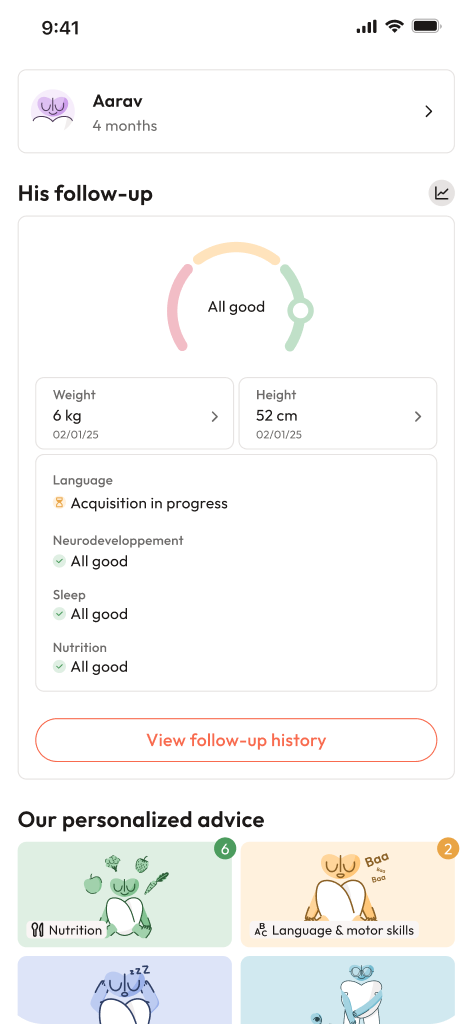Journeying through the first trimester of pregnancy is never a straight path—more a winding road, sometimes peppered with unexpected twists and, occasionally, moments of quiet astonishment. Perhaps you’re already counting the passing days from your last menstrual period, anxiously eyeing the calendar, or maybe you’re puzzled by a wave of symptoms as you read these lines. Questions bubble up: when does “morning sickness” actually start, is every cramp alarming, and how do you eat right for more than yourself without overthinking every bite? These uncertainties are shared by countless parents, whether it’s your first pregnancy or you’ve walked this road before. Together, let’s untangle what the first trimester of pregnancy really brings—physically, emotionally, medically—and unpack science-backed insights to make things clearer, not more confusing. The journey covers weeks 1 to 12 (sometimes 13), a period jam-packed with both intricate fetal development and a cascade of bodily changes for you. Now, let’s walk through milestones, screening, nutrition, red flags, and meaningful actions to take.
Understanding the First Trimester: Timeline, Dating, and Key Milestones
If you’re ever startled by how soon the first trimester of pregnancy starts “counting,” you’re not alone. Here, time begins with the first day of your last menstrual period—a little trick used by doctors for dating, even though conception actually tends to occur about two weeks after.
- Gestational Age (GA): This is calculated from your last period, anchoring all medical plans and screenings.
- Conception Age: Technically the age of the embryo from fertilization—usually two weeks less than the gestational age.
- Due Date Calculation: A quick formula, called Naegele’s rule (LMP + 1 year − 3 months + 7 days), gives the rough “expected date of delivery” (280 days, or 40 weeks, from LMP).
- Refining the Due Date: Especially if cycles are irregular, nothing beats a first-trimester ultrasound measuring crown-rump length (CRL)—ideally performed between 7 and 13 weeks GA—for accuracy.
Milestone highlights:
- Weeks 1–2: Officially, you’re not pregnant yet! This is the timing phase, waiting for fertilization.
- Week 3–4: Fertilization, then implantation in the uterine lining. The placenta begins construction. Tiny as a poppy seed by week four.
- Weeks 5–8: The “embryonic period”—the heart, neural tube (future brain/spinal cord), and organs commence their intricate choreography. By six weeks, the fetal heart can often be seen beating on ultrasound.
- Weeks 9–12: “Fetal period” begins. Internal organs mature, limb movements start, and the risk of miscarriage dips dramatically if a heartbeat seen at this point. At the end of the first trimester of pregnancy, your developing baby usually measures about 8 cm, weighing barely 8–9 grams.
Why do healthcare professionals focus so much on accurate timing? The window for screening and early prevention is tight—organ structures form, adapt, or are sometimes compromised by nutrient shortages or infections in matter of days.
Physical and Emotional Changes: What to Expect, What’s Normal
You may recognise the scenario—breast tenderness so pronounced it sparks suspicion, scents that never bothered you before suddenly feeling overwhelming, or a tiredness that seeps into your very bones. In the first trimester of pregnancy, symptoms often emerge in waves, sometimes vanishing as quickly as they appear.
Most common symptoms include:
- Nausea/vomiting: Often called “morning sickness,” though it can strike any time. Surges of hormone hCG play the lead role here.
- Breast changes: Fullness, heaviness, and even mild aches.
- Fatigue: Growing a placenta—your baby’s life-support system—is not a minor task!
- Frequent urination: The body produces extra fluid while the uterus presses on the bladder.
- Mood swings: Progesterone and estrogen, coupled with new anxieties, can make emotions oscillate like a seesaw.
- Mild abdominal cramps: Sometimes due to uterine growth, but heavy pain or bleeding signals a need for medical advice.
Some less-discussed but normal changes:
- Nasal stuffiness due to mucous membrane swelling.
- Increased salivation, subtle skin shifts, or even vivid dreams.
Tip: If you feel almost nothing, or if your symptoms are intense—both scenarios can be normal. Severity doesn’t predict the health of your baby! If symptoms keep you from daily activities, do not wait to seek help.
Week-by-Week Fetal Development: Nature’s Precision at Work
The transformation inside your uterus is astounding—weeks measured in millimeters and rapid cell divisions.
- Week 4: A gestational sac and yolk sac may become visible. The embryo is still the size of a tiny grain, but the blueprint of organ systems is quietly unfolding.
- Weeks 5–6: The neural tube closes (failure to do so results in neural tube defects), and a heartbeat flickers—a moment that many describe as truly magical.
- Weeks 7–8: Limb buds, fingers, toes, and facial features take form. CRL grows quickly—from about 5 mm up to 22 mm by week 8.
- Weeks 9–12: Organs like kidneys start functioning, the liver produces blood cells, and miniature movements start—though you won’t be able to feel them just yet. Gender characteristics begin to emerge externally.
Clinical Note: This embryonic window is the most sensitive to medication or infection exposures; folic acid supplementation during this phase dramatically reduces the risk of neural tube defects.
Nutrition and Supplements: Fueling Early Growth
Wondering what’s “safe” to eat, what’s essential, and what really makes a difference? In the first trimester of pregnancy, nutrition plays a supporting but irreplaceable role.
Essential nutrients:
- Folic Acid: 400–800 mcg daily (start preconception if possible). Reduces the risk of spina bifida and other neural tube defects.
- Iron: Found in lean meats, beans, and leafy greens—prevents anemia and supports placental growth.
- Iodine, Vitamin D, Calcium, Omega-3 fatty acids: Each supports neurodevelopment, bone growth, and metabolism. Especially important if you’re vegetarian or vegan.
- Choline, Vitamin B12: Needed for neurological development.
Food safety check:
- Eat: Well-cooked meats and eggs, pasteurized dairy, a rainbow of fruits/vegetables, whole grains, and healthy fats (flaxseed, oily fish).
- Avoid: Unpasteurized dairy, raw meats or fish, deli meats unless steaming hot, high-mercury seafood, and alcohol. Caffeine—generally keep below 200 mg/day.
- General Rule: Prefer small, frequent meals to battle nausea. Cold foods and dry crackers are often well tolerated.
Prenatal Care: Appointments, Screening, and Early Planning
Booking your first prenatal appointment swiftly after a positive test is the bridge to safer care. Expect your provider to:
- Confirm Pregnancy and Calculate Due Date: Early ultrasound (typically between 7 and 13 weeks) provides a reliable date and assesses viability.
- Screening and Tests: Baseline bloods (anemia, blood group, hepatitis, HIV, syphilis), urine check. Thyroid testing (if risk factors or symptoms).
- First-trimester screening: Blood markers (PAPP-A, free ß-hCG) and nuchal translucency (NT) ultrasound between 11–13+6 weeks. These screens estimate the risk of chromosomal anomalies (like Down syndrome).
- NIPT (Noninvasive prenatal testing): Available from week 10, using cell-free fetal DNA for more precise risk assessment.
- Diagnostic options: Chorionic Villus Sampling (CVS) for those with higher genetic risks, best done between 10–13 weeks.
Booking tips: Bring ID, your LMP date, medication list, and any health records—more information helps your provider support you best.
Managing Symptoms: Real-World Strategies
- Nausea: Small snacks, avoid rich and greasy foods, hydrate often, try ginger (tea, lozenges), and discuss vitamin B6 with your provider if it’s overwhelming.
- Constipation: High-fibre meals—think leafy greens, pulses, and plenty of water.
- Fatigue: Listen to your body, schedule rest breaks, and shape your evenings to promote sleep—dim lights, limit screens, and create simple routines.
- Breast discomfort: Supportive bras and warm packs provide relief.
Note: Always check with your provider before adding any supplement or medication.
Red Flags: When to Seek Medical Attention—No Hesitation Needed
While most changes are harmless, some symptoms demand swift medical advice:
- Heavy vaginal bleeding
- Persistent or severe abdominal pain
- Fainting, severe dizziness
- High fever, chills
- Severe vomiting with weight loss (hyperemesis gravidarum)
- Shoulder-tip pain, sudden weakness, or rapid heartbeat
Concerns about miscarriage or ectopic pregnancy? Any bleeding, severe pain, or unusual symptoms—err on the side of caution. Contact your doctor immediately.
Lifestyle, Activity & Safety
Being active is usually encouraged during the first trimester of pregnancy—30 minutes a day of moderate exercise like walking, prenatal yoga, or swimming keeps you energized (just avoid high-risk activities). Sex is generally safe, unless told otherwise, and travel (including flying) is typically not restricted if your pregnancy is uncomplicated.
Household and work tips:
- Use gloves when in contact with soil or cat litter (to avoid toxoplasmosis).
- Avoid overheating (no hot tubs or saunas).
- If strong smells or certain tasks at work affect you, don’t hesitate to discuss gentle adjustments like rest breaks or ventilation.
Emotional Well-Being: Vulnerability, Shifts, and Support
The first trimester of pregnancy can feel like an emotional rollercoaster—joy, fear, irritability, and sudden tears. This isn’t just hormones; new responsibilities and shifting identities weigh in too. Speak openly with your partner, friend, or health professional, especially if you have a history of anxiety or depression. Early conversations mean timely help. If you have dark thoughts, there’s always someone to listen.
Partners and Family: How They Can Help
Partners often find their new role starts early—attending checkups, handling chores, or learning about tests and birth preferences. Small things matter—a prepared meal, childcare for older children, or simply a listening ear. Collaboration now lays the foundation for confident parenting later.
First Trimester Checklist
- Begin (or continue) a prenatal vitamin with folic acid
- Book your first prenatal appointment and early ultrasound
- Learn about screening options, discuss with your healthcare provider, and plan their timing
- Review any current medications with your provider
- Establish nutrition, hydration, and gentle fitness habits
- Arrange a dental checkup, organize vaccination status
- List emergency contacts, and consider a pregnancy-tracking app or diary
Key Takeaways
- The first trimester of pregnancy—weeks 1 to 12—is the foundation stone for your baby’s entire development, both structurally and functionally.
- Nutritional choices and early folic acid supplementation make a profound difference in reducing risks.
- Not all symptoms mean trouble, but never ignore heavy bleeding, severe pain, or high fever.
- Early and regular medical appointments set the tone for healthy outcomes—booking promptly gives you options in screening, planning, and care.
- Partners, friends, and reliable information are powerful allies.
- For personalized advice, practical tools, and child health questionnaires, you can download the application Heloa.
Questions Parents Ask
When do pregnancy symptoms usually start and when do they peak?
For most, subtle signals—breast soreness, tiredness, or gentle queasiness—appear around the 4th to 6th week of gestational age, with a crescendo between 8 and 12 weeks. Hormonal surges (especially hCG and progesterone) dictate this rhythm. Some experience almost no symptoms, others feel them intensely, and a few continue beyond the first trimester of pregnancy. If symptoms disrupt life, consulting your doctor is advisable—effective and safe treatments exist.
Can I take common pain relievers like ibuprofen or acetaminophen in the first trimester?
Paracetamol (acetaminophen) is generally considered the first choice for occasional pain or fever during pregnancy, but always after a chat with your doctor. Nonsteroidal anti-inflammatory drugs (e.g., ibuprofen) are typically avoided, especially later in pregnancy; some prefer not to use them early on as well. Always consult before self-medicating—timing, dosing, and your unique health context matter.
When should I tell my employer, and what workplace adjustments can help in the first trimester?
The timing is personal—some wait for the first scan or when symptoms become disruptive, others prefer early transparency for practical support. Small workplace changes (flexible hours, brief breaks, reduced exposure to strong smells or heavy lifting, opportunity to sit) can ease discomfort. Unsure about workplace rights or adaptations? Human Resources or occupational health can clarify your options.
Is light spotting or mild abdominal pain worrisome in early pregnancy?
Light spotting or gentle cramps can be common, especially after implantation, but heavier bleeding, severe pain, or symptoms like dizziness should never be ignored. If you’re uncertain or anxious, err on the side of caution and contact your provider for assessment.
Which foods are best and which are strictly off-limits during the first trimester?
Go for variety: cooked proteins, pasteurized dairy, fruits and veggies (washed), whole grains, and healthy oils. Avoid alcohol, raw meats or fish, high-mercury seafood, unpasteurized products, and limit caffeine. If you’re unsure about specific traditional dishes or supplements, ask your provider for personalized guidance.
How often should I see the doctor in the first trimester of pregnancy?
Usually, one to two visits during the first trimester of pregnancy (often at 8–12 weeks for dating and screening). Subsequent appointments are usually four weeks apart until later trimesters, unless complications arise. Early care enables more choices and crucial baseline tests.
My fatigue is overwhelming—when should I worry?
Significant tiredness is often normal in the first trimester of pregnancy (placental formation is truly demanding). However, if fatigue is accompanied by dizziness, paleness, rapid heartbeat, or you are unable to function, bring this up with your doctor as anemia, thyroid disorders, or infections should be ruled out.
Is exercise safe in the first trimester of pregnancy?
Most moderate activity (walking, swimming, yoga) is safe for those with uncomplicated pregnancies and clears the mind as well as the body. Avoid contact sports and overheating. When in doubt, always check with your provider before starting or continuing a fitness routine.

Further reading:









